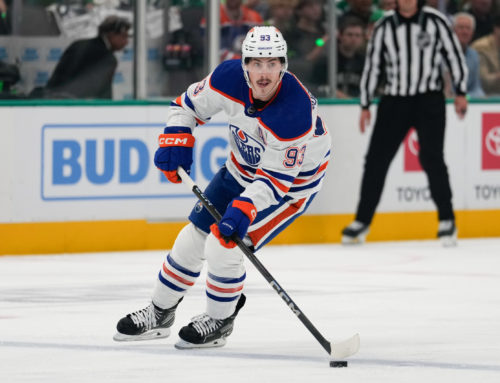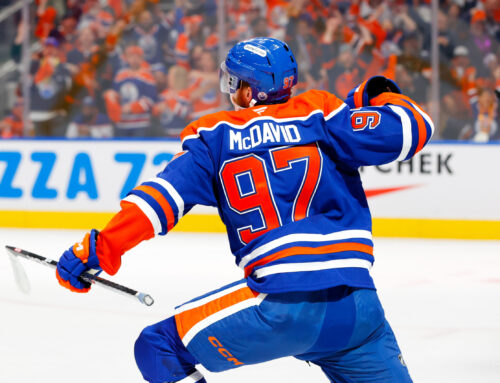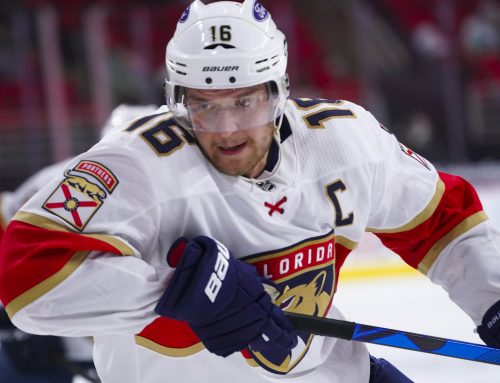According to Larry Brooks of the New York Post, more details emerged regarding the NHL's return to play plan:
- Two-week training camps, with teams travelling to their hub city on July 23/24 before playing one exhibition game
- The Stanley Cup play-in tournament starts July 30
- Teams allowed 30 skaters plus unlimited goalies for camp, and 28 skaters plus unlimited goalies for tournament (IR players do not count against limit)
- Hub cities expected to be selected within the next week
For more details, here's the full article:
There aren't any major surprises here, but the recent news of COVID-19 cases likely affirms that the league needs to have details in order to improve the likelihood that the playoffs get played. I wonder if delaying the hub city announcement has anything to do with the NHL tracking the recent spike in cases in particular regions such as Florida and Nevada. MLB had its sights set on Florida and Arizona to restart the season, but as of today, its US-based teams are planning to shift their spring-training camps to their home cities.
The more that the recent trends continue, the more I like a Canadian city's chances of being selected as a hub city. Here in BC, we have a population of just over 5 million, only seven new cases on Friday, and zero deaths this past week. Alberta (population 4.3 million) is a bit higher with 46 new cases but also no new deaths on Friday. Conversely, Nevada (population 3 million) reported 410 new cases on Friday. I realize the advantage that Vegas has with all the huge hotels, but it will still need to be an air-tight bubble for this to work.
Of course, this tweet appeared not long after I wrote the paragraph above. It does support at least part of my thinking.
Ontario, with a population of 14.5 million, reported 206 new cases and 31 deaths on Saturday. This is the first time in six days the province has recorded 200 cases, but the overall numbers would support why Toronto may have slipped behind Vancouver and Edmonton in the hub city power rankings. Of course, it's difficult to know where this will be in a month or two, but the NHL only has current trends to work with.
*
I've been on the Ramblings for three consecutive days now, but I just realized I haven't discussed the Sabres situation yet. Yeah, what a mess. Mike touched on it in his Ramblings the day after it happened, so I'll just add some of my own thoughts.
First, the move to fire GM Jason Botterill and something like 20+ other staff seems to be more financially motivated than anything. The COVID-19 situation means that if the NHL's return-to-play plan goes as planned, the Sabres won't be playing until January 2021 at the earliest. And that may be without fans in the stands. That's a lot of time without hockey.
It might seem puzzling that all of these scouts would be let go when there's still an important draft coming up, but Seravalli mentioned that most scouting work leading up to the draft has already been done.
Going through a general manager every three years isn't a recipe for success, though. Botterill lasted only three years. Before him, Tim Murray lasted only three years. So now the expectation is that Kevyn Adams will have only three years to right the ship, which can't be fair. Jack Eichel doesn't sound like someone who wants to wait for a three-year rebuild plan, so I can guarantee that he will ask for a trade if the Sabres don't make the playoffs by then. The Pegulas probably had the recent words of their star player in mind when deciding whether to include Botterill in their organizational cuts.
If you think it's crazy that the Sabres have been going through GMs every three years, then it might be even crazier that they seem to change coaches every two years. Ralph Krueger is on a three-year contract ending after the 2021-22 season, so Adams will need to decide whether to fire him or extend him after the 2020-21 season. That means given the current pattern, Krueger will have the 2020-21 season to turn things around, or he'll be out of a job as well. Then Adams would have the chance to hire his own guy.
*
On Friday when stating that Seth Jones had been activated from IR, I also mentioned that he was listed in the Top 100 Roto Rankings. I then realized that Jones' teammate Zach Werenski was not listed in the Top 100, in spite of a higher point-per-game total (0.65) than Jones (0.54) this season. That got me thinking: Should I include Werenski? And if so, should it be at the expense of Jones?
I went to the Compare Players function at Frozen Tools to help me. From last season:
| GP | G | A | +/- | PPP | SOG | HIT | |
| Jones | 56 | 6 | 24 | +10 | 9 | 126 | 62 |
| Werenski | 63 | 20 | 21 | +9 | 13 | 187 | 36 |
If Werenski's goal total seems high, it's because it was. He was the only defenseman to score 20 goals this season (Roman Josi and Alex Pietrangelo tied for second with 16). Werenski also finished sixth among blueliners with 187 shots, and he did so in spite of missing seven games.
And over the last three seasons:
| GP | G | A | PTS | +/- | PPP | SOG | HIT | |
| Jones | 209 | 31 | 102 | 133 | +21 | 43 | 559 | 260 |
| Werenski | 222 | 47 | 75 | 122 | +5 | 38 | 562 | 161 |
As I was digging up some more information, I also noticed that Werenski's and Jones' upside and 3-year peak in the Midseason Guide are almost exactly the same (67/53 and 67/52, respectively). Over the past three seasons, Jones' point totals have fluctuated from 57 points in 2017-18 to 30 points (in just 56 games) in 2019-20. Meanwhile, Werenski's has remained steady in ranging between 37 points in 2017-18 to 41 points in 2019-20. In particular because of 2017-18, it would appear that Jones would have the higher ceiling, but that could be debated because it's only one season.
There are many categories which could be considered practically the same here, especially over the last three seasons. Points, power-play points, shots, and even plus-minus (by virtue of playing on the same team). Werenski has the clear advantage in goals, which are more valuable as a point because there are fewer of them. Jones, however, is clearly the better option in bangers leagues, as both his hits and penalty minutes totals will attest to. Werenski also doesn't block a ton of shots, which I discussed back in an early May Ramblings.
In the end, Werenski is a player that I could make some room for in the top 100. It shouldn't be at the expense of Jones for the similarities that I've listed above. Maybe I bump a player like Jeff Petry, who has thrived over the past three seasons because of Shea Weber's injury issues. At the much more advanced age of 32, Petry's ceiling will be lower than both of that of Blue Jackets defense partners Jones (25) and Werenski (22).
Remember, if you would like to view the various fantasy rankings that each player has, click on the Info/Analysis link on the player's Frozen Tools profile. To compare, here are the Dobber Fantasy Rankings for each of the three defensemen.
| Category | Jones | Werenski | Petry |
| Top 300 (Keeper) Skaters | 156 | 124 | 245 |
| Top Defensemen | 22 | 18 | 45 |
| Top Roto League Players | 96 | NA | 99 |
| Top Cap League Players | 121 | 48 | 130 |
Have some feedback on the Top 100 Roto Rankings? Leave me a note on Twitter, or comment in the Roto Rankings.
*
For more fantasy hockey information, or to reach out to me, you can follow me on Twitter @Ian_Gooding.





 CAR
CAR FLA
FLA BUF
BUF EDM
EDM DAL
DAL OTT
OTT ANA
ANA UTA
UTA WPG
WPG
